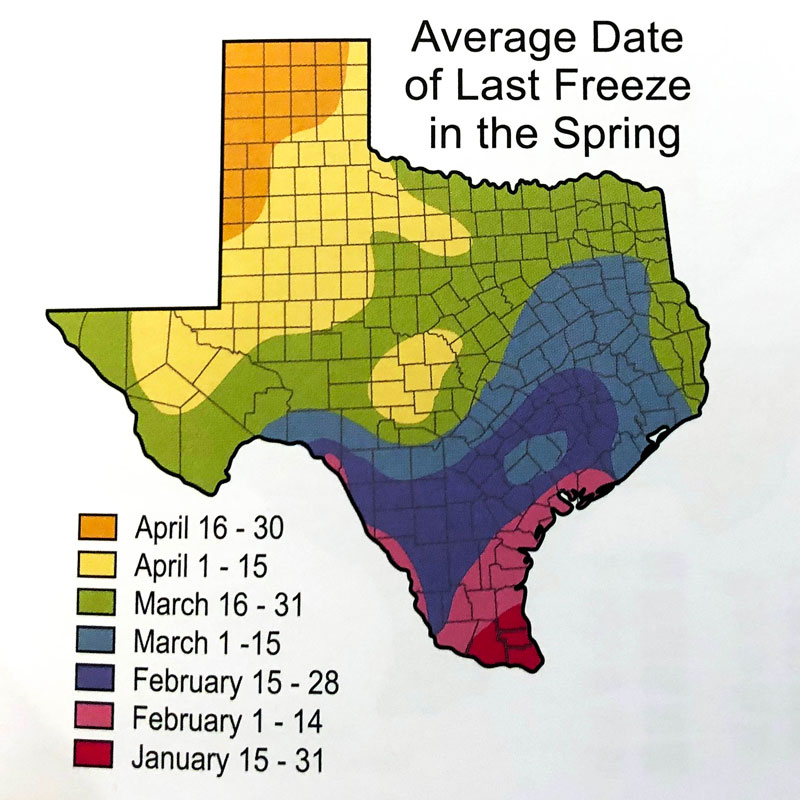Garden Tip: Last Killing Freeze
Gardeners would love to know when the final killing freeze (or frost) of the winter had finally happened, because that would be their signal that it was safe to get started with many of their warm-season activities.
Frost-tender flower and vegetable transplants could be set out then. Summer bulbs could be planted. Sod could be laid. But, uh oh – it would be too late to apply pre-emergent weedkillers to stop crabgrass and grassburs.

So, the record keepers and statisticians have been busy for the past 100-plus years, and they’ve determined for each county in Texas when the average date of that last killing freeze (or frost) is most likely to occur.
Here’s the important part…
Once you know the average date of the last killing freeze (or frost), you know that on that date you have a 50-50 chance of encountering at least one more killing freeze (or frost) before the growing season gets going for real.
Gardening gamblers are willing to take those odds, especially if they’re protecting their plants with frost cloths. Others of us are willing to wait one more week until the odds are more in our favor.
Going the other way and working backwards from that average date for your area, there are cool-season vegetables and annual flowers that tolerate frosts and light freezes. They need to be planted two to four weeks prior to that average date of the last killing freeze (or frost).
You might want to print this map and keep it handy for future reference. Smart phones can also often give you a quick answer as to the “average date of the last killing freeze for (your county) Texas.” Write that on your printout as well.
I use this information daily this time of year, both in my own landscape and garden, also in writing for you and answering your questions. You’ll see how many scores of times I refer to it in my book Neil Sperry’s Lone Star Gardening.
Note: I’ve obsessively added “or frost” every time I’ve written “last killing freeze” in this story. That’s because you can have serious damage done by cold at temperatures that never actually reach 32F. Frost can form on leaves on still, clear nights when temperatures fall into the mid-30s, so even at those warmer temperatures you’ll need to take precautions.
